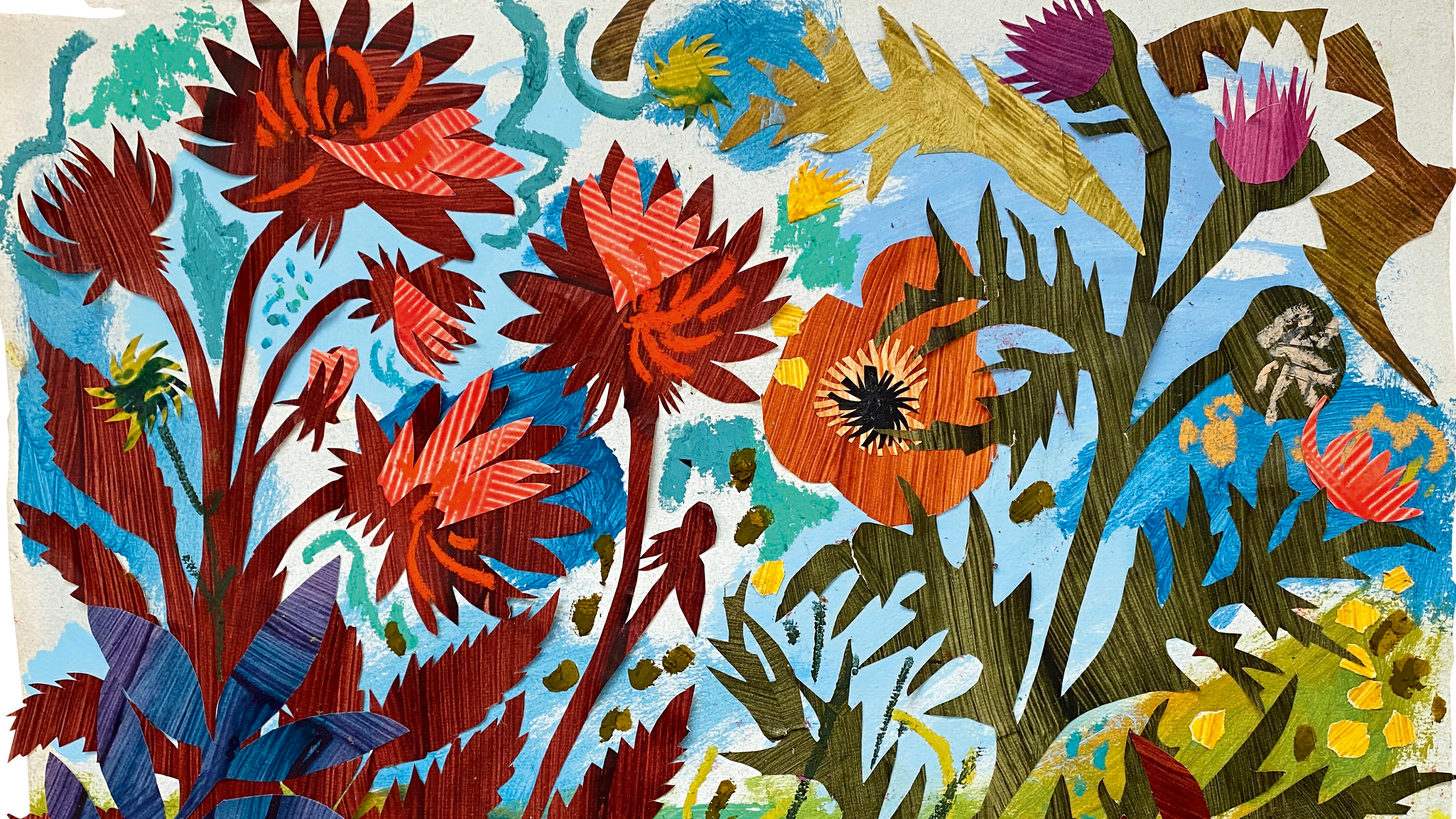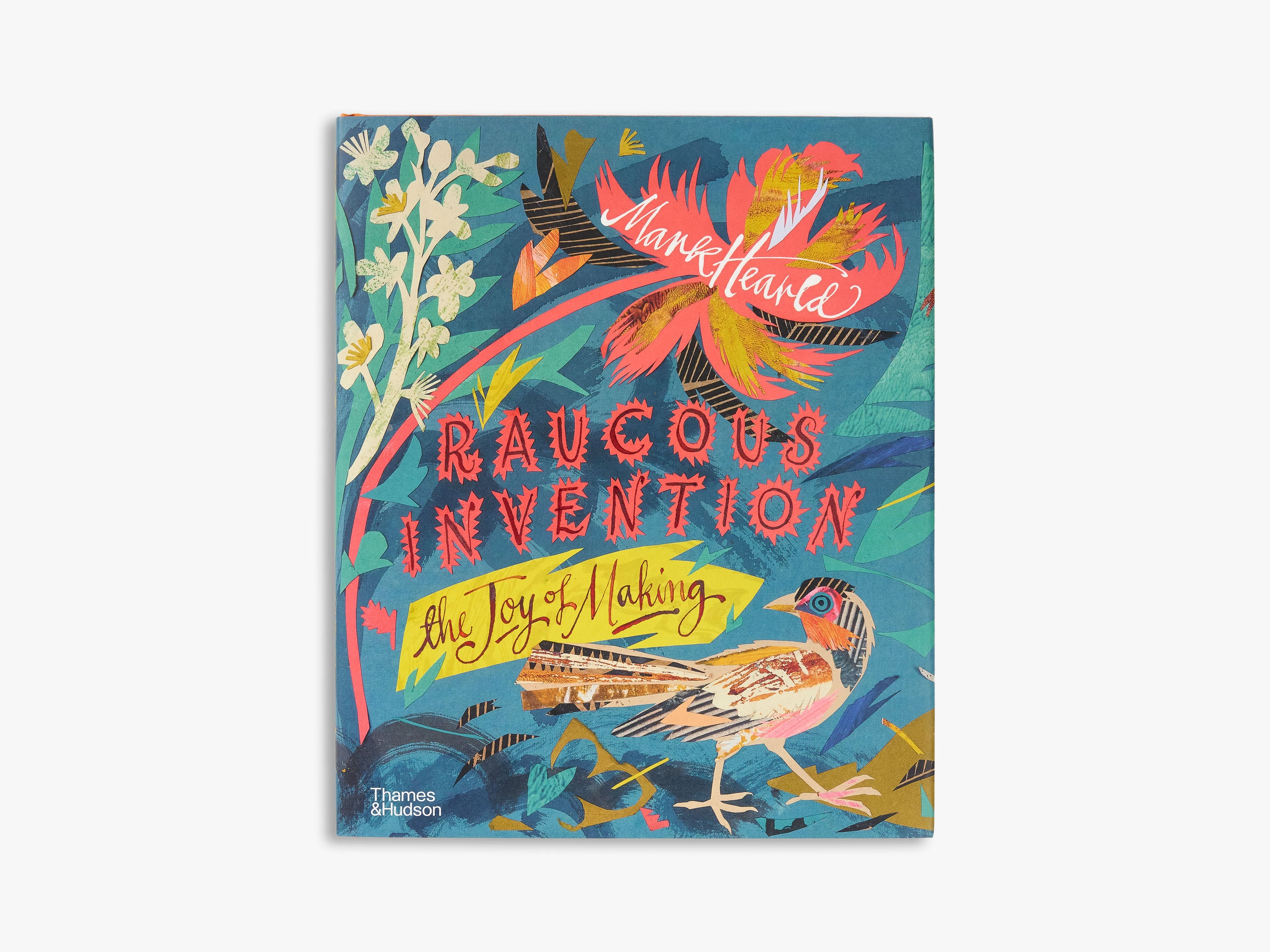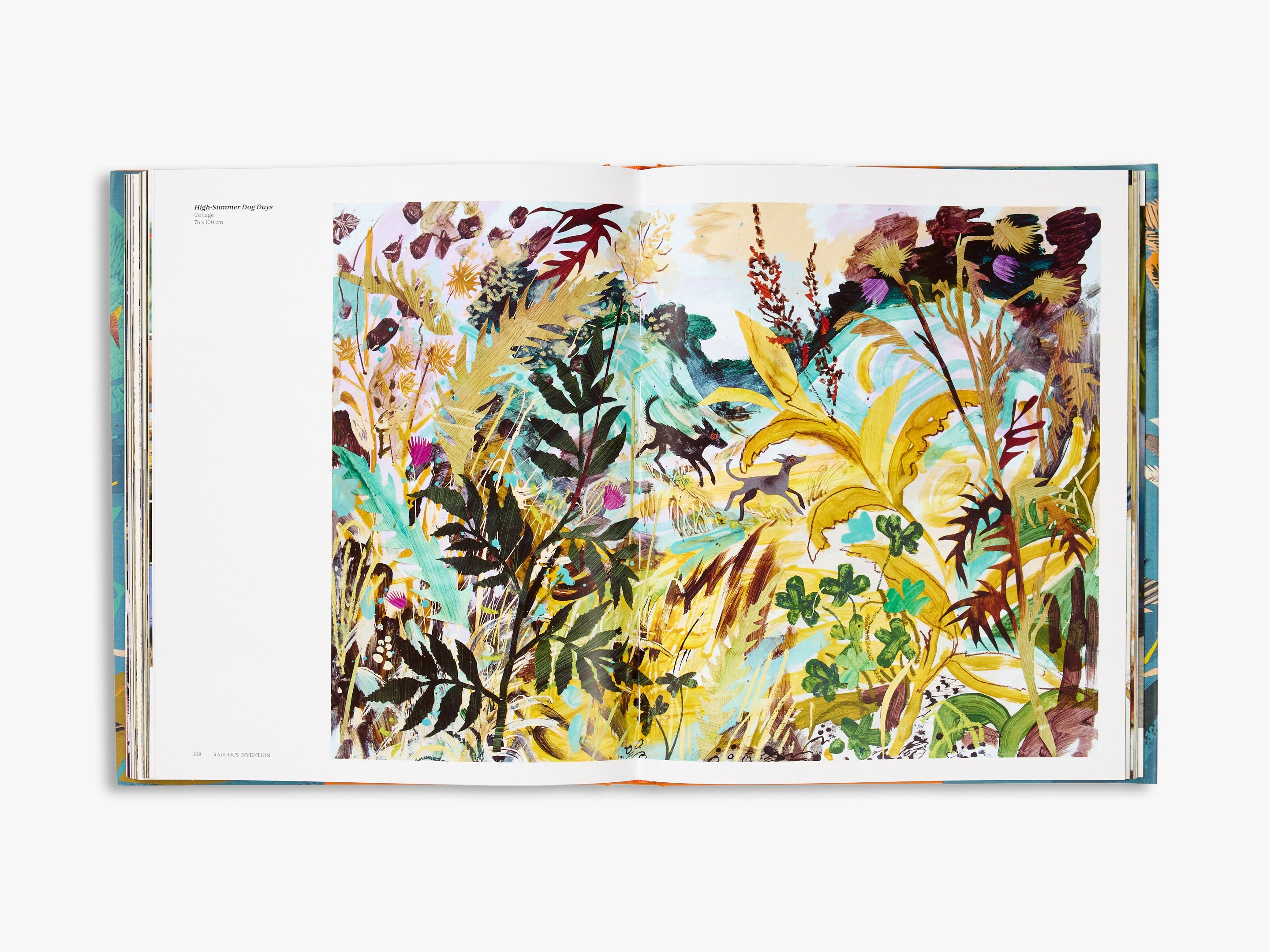© Mark Hearld. ‘It’s August Again.’ Collage, 43.5 × 55 cm
Take one look at Mark Hearld’s works of art and it will come as no surprise that he is a popular artist. Hearld’s keen interest in the natural world shows up again and again in his vibrant and energetic work, as he experiments with numerous mediums from collage and textile design to linocut print, wallpaper and sculpture.
With over 100 new illustrations, additional material and commentaries by the artist, Raucous Invention is a celebration of – and insight into – Hearld’s extraordinary creativity. In this extract, Hearld shares his process of collage and the joys of experimenting as he creates.

© Mark Hearld. ‘The Tawny Owl Watches.’ Collage, 56 × 60 cm
Collages can begin in many different ways; there’s no one way to create. There are no rules, and that’s the rule. Sometimes a collage is almost fully formed before I get into the studio. That often happens when I’ve seen something particular, such as when I’ve driven round a corner at dusk and seen a roebuck in the road, bounding into the shadow. Then I’ve got an image in my head and it’s a case of interpreting that with the materials in front of me. But I make work five or six days a week, so I don’t always have a fully formed idea. At art school, the idea is put on a pedestal in such a way that if somebody feels they haven’t got one they’re paralysed. However, I think it’s important to find the idea in the making and the doing.
It’s a case of going into the studio and finding a beginning. That might be a connection you notice between a beautiful piece of violet paper and a piece of mustard-yellow paper, and something about the way they combine gives you an idea, or you cut a shape from one of them and place it down, and then the collage begins like that.
[…]

From left to right: © Mark Hearld. ‘Advent Fireworks.’ Collage, 75 × 56 cm / Mark Hearld portrait by Antony Crolla
But sometimes you can do all those things and nothing quite connects. It’s a little bit like the first ungainly moves on the dance floor, when you hear the beat and step out, but nothing feels quite right – you’ve got to suspend disbelief and keep going, find your groove. That’s very much like making an image, because until the marks and the gestures begin to connect, they all seem unrelated, gauche, inarticulate, unless you’re lucky and you suddenly find that same groove from the outset.
But more often than not, you have to push through a swathe of marks or cut-paper shapes that don’t connect. Then you must go through the pain barrier of getting all the disparate elements to sing. That can be really difficult; it can take a long time before anything seems to connect.

© Mark Hearld. ‘Hounds in the Snow.’ Collage, 36 × 43.5 cm
Where people go wrong – if you can go wrong with collage – is they make collages in which all the things are shouting, but they’re not connecting or communicating. The skill of making a good collage lies in uniting the disparate bits, the pieces that somehow begin to talk to one another. It might be that just two elements chime off each other, and when that happens, it’s incredible, because it feels as if the whole pathway through the rest of the collage opens out, and you can see every next mark one after another; I don’t know why. That’s when you are fully immersed and actually enjoying the creative process.
[…]

© Mark Hearld. ‘Swans and Modernism.’ Collage
Sometimes those collages where you struggled have a sort of residual story underneath that adds to the overall image. At other moments you can have an angular sheet of royal-blue paper, an orange sun, a cut-paper bird and a long sliver of black paper, and they all find their optimum place with great economy. It’s sort of a one-touch approach, and that can be equally satisfying and good – just different.
The more experience you have, the more ingredients you can add to the mix, and ultimately the more richness you can have. When you begin to use very varied materials, when you get it right, the dynamism that can be achieved with a combination of a torn-paper cloud and the implied currents of wind from a dip-pen scribble is truly electric. That’s why I feel that mixed media is always such a potent, rich way of creating. The materials all bring their own kind of life, energy and voice.

© Mark Hearld. ‘Sunflowers and Michaelmas Daisies.’ Collage, 55 × 76 cm
Just as there are different voices in a choir, in a collage different voices come from a dip pen, an oil pastel and a chalk pastel. Very often, the discarded or the ephemeral plays a vital role in a collage. Something discarded already has its own shape that can be dropped into the mix; it’s not premeditated or thought out, and that aspect energises the design. I use discarded paper of all kinds, bits of chequerboard-patterned paper from my sandwiches, the inside of envelopes, Florentine endpapers, corrugated card, etc. I think that’s why, whenever I try to use just paint and a paintbrush, I feel ill-equipped, because materials offer up solutions by themselves, whereas with a paintbrush you have to create particular effects. Gestures with an oil bar or a sharpened waxy pencil tell their own stories, creating a vividness that’s hard to contrive.
Words by Mark Hearld
Raucous Invention is available now.








